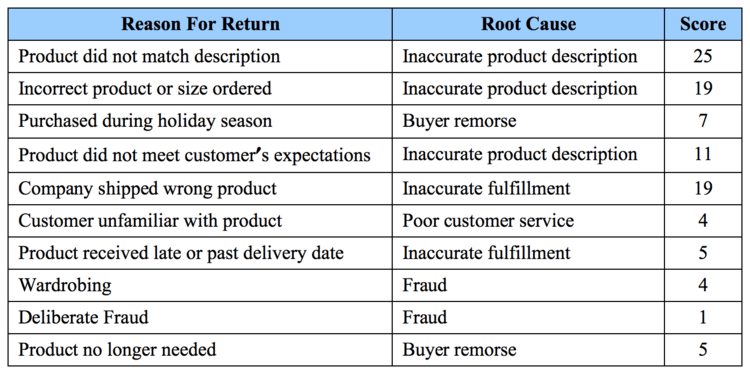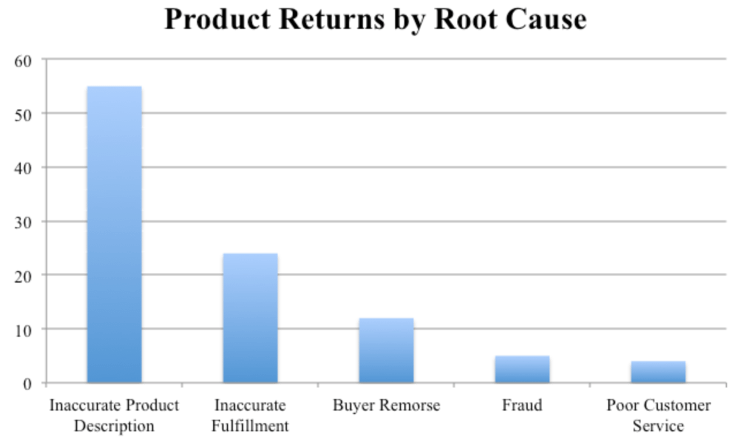Reduce Product Returns with the 80/20 Rule

The Vital Few and Trivial Many of Product Returns: The 80/20 Rule
The good news: you’ve just gotten promoted to Director of Reverse Logistics.
The bad news: you’ve inherited a whole host of problems that need your immediate attention.
Ideally, you want to focus your attention on the most significant problems, but where do you begin? How do you decide which issues are priorities and which can wait? Are the same root causes creating multiple issues?
Reduce Product Returns
The Pareto Principle, or the 80/20 rule as it’s frequently called, can be a helpful tool to wade through the chaos of reverse logistics and yield meaningful results in a short amount of time. The idea behind the Pareto Principle is that most things in life have uneven distribution, and some factors contribute more than others.
In terms of reverse logistics or product returns, it could apply to any or all of the following:
- 20% of your customers generate 80% your returns
- 20% of your products generate 80% of your returns
- 20% of your returns generate 80% of the associated costs
Here is how to use the tool:
- Identify and list the problems
- Identify the root cause of each problem
- Score the problems according to their rate of occurrence
- Group problems together by root causes
- Add up the scores for each group
- Take action
The Problem
Below are actual numbers from a small $10M ecommerce operation with which I was recently involved. (I simplified the table to the top 10 reasons over 1 month). The catalyst was increasing pressure on margins, but an overall increase in product returns proved to be very costly. While initially, the returns appeared to be driven by unassociated causes, a quick Pareto analysis showed something entirely different. Our objective was to gain a better understanding of the “why” and use this information to enhance the customer experience.
Pareto Analysis
By grouping the problems by cause and adding up the number of returns, I found the following information to be true:
- Inaccurate product description = 55
- Inaccurate fulfillment = 24
- Buyer Remorse = 12
- Fraud = 5
- Poor customer service = 4
After charting this information, it became clear that addressing the product description issue first and the fulfillment issue later would be the best use of time and resources. Together these two causes created 79% of the product returns.
The Action
Based on this information, we immediately redesigned our product pages to ensure that customers had as much information as possible before placing an order. Our goal was to reduce product returns. A key component was adding visual information like detailed photos, 360 views, instructional videos, and user reviews.
To address the fulfillment issue, we zeroed in on a few bins and SKU’s that had been incorrectly labeled and led to high return rates for specific products. Again, the 80/20 rule showed us exactly which SKUs had the highest return rates and fell outside the normal return parameters.
The Result
Over the next quarter, the results were even better than expected. Not only did we reduce product returns for all categories, but overall site conversion rates also increased.
By providing all of the necessary information for an informed purchase, customers were more likely to make purchases and less likely to return items.
Our objective to enhance the customer experience was both successful and more profitable.
The Conclusion
The Pareto Analysis is a simple technique that can effectively prioritize problem-solving work – not just for product returns but just about any problem. With the 80/20 rule, one can gain nearly 80% of the benefit by focusing on 20% of the root causes.
That doesn’t advocate ignoring the trivial many. But when picking a starting point, the vital few is the place to begin.





